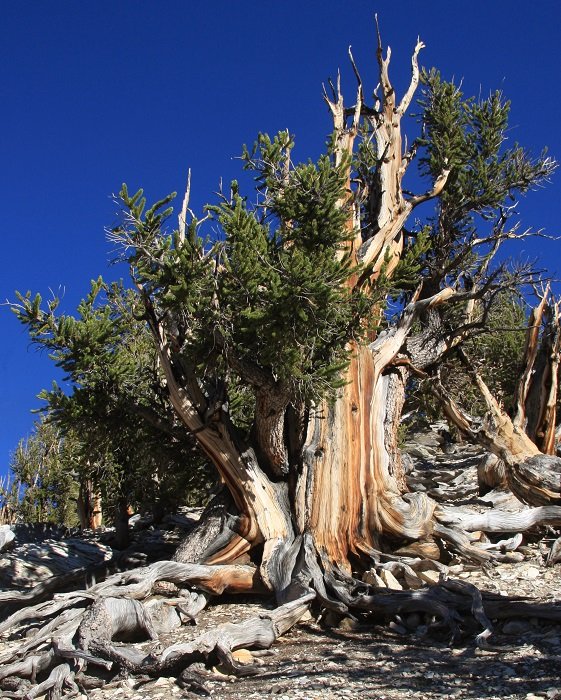Well, maybe not forever. But micro-biologists have found single celled organisms on the bottom of the deep sea that have a completely different relation to time and energy, and they can live for hundreds of thousands of years, maybe even millions of years...
Regular visitors of this blog might have noticed that I love science. That's why I regularly check up on the latest TED-talks. A while ago one of these talks inspired me to go look for strange and beautiful life forms in the dee sea that I presented in this post. Now, as wonderful as all those are, I recently had the pleasure of listening to Karen Lloyd's TED-talk about some startling discovery on the oceans' floors.
One of the things I wanted to find out as a kid was what the oldest living things on Earth are. The undisputed king in that particular ranking has for the longest time been some Bristlecone Pine tree, the latest being this one:

5,067 year old Great Basin Bristlecone Pine
source: oldest.org
But I was so wrong... There's even a term called biological immortality:
Biological immortality (sometimes referred to bio-indefinite mortality) is a state in which the rate of mortality from senescence is stable or decreasing, thus decoupling it from chronological age. Various unicellular and multicellular species, including some vertebrates, achieve this state either throughout their existence or after living long enough. A biologically immortal living being can still die from means other than senescence, such as through injury or disease.
source: Wikipedia
In the TED-talk Karen Lloyd takes us on a journey to the mud on the ocean's bottom. Some microbes survive under circumstances that differ so greatly from our surroundings in the sunlight, that they change our understanding about life on earth. What's especially remarkable is the very low energy requirements and the total lack of any day-night cycle these microbes live with. The effect of this is that these organisms live in a totally different "rhythm" than all surface-dwelling life on the planet, and that they can reach extreme old ages.
Naturally I went looking for confirmation of this remarkable claim, but this has been known for quite some time now. Here's what we find in Wikipedia under the heading "List of longest-living organisms":
Some endoliths have extremely long lives. In August 2013, researchers reported evidence of endoliths in the ocean floor, perhaps millions of years old, with a generation time of 10 millennia. These are slowly metabolizing, not in a dormant state.
source: Wikipedia
Perhaps millions of years old... Imagine if that microbe could tell tales... But I bored you long enough with needless talk about age; you're getting old reading this ;-) So here's the talk that amazed me and got me thinking about life's fleeting nature:
This deep-sea mystery is changing our understanding of life | Karen Lloyd
I hope you enjoyed that as much as I did! Thanks for visiting, and I hope you'll be back tomorrow :-)

Recent articles you might be interested in:

Thanks for stopping by and reading. If you really liked this content, if you disagree (or if you do agree), please leave a comment. Of course, upvotes, follows, resteems are all greatly appreciated, but nothing brings me and you more growth than sharing our ideas. It's what Steemit is made for!


Just for Full Disclosure, I'm invested in these crypto-currencies:
Bitcoin | Litecoin | EOS | OmiseGo | FunFair | KIN | Pillar | DENT | Polymath | XDCE | 0x | Decred | Ethereum | Carmel | XYO
